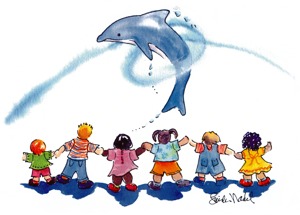Child Sexual Abuse
Tips for Teaching Safety
Chances are you started to teach your children safety rules as soon as the learned to crawl-rules like “don’t touch the hot stove” and “don’t run into the street.” From a very young age children are taught not to take candy from a stranger.
Here are some guidelines to help teach your child the difference between affection and abuse. This will assist you in explaining the difference between safe and unsafe touches. Your willingness to talk to your children about sexuality and sexual abuse can be the first important step to keeping your child safe and healthy.
-
Teach your children that they are special and deserve affection.
-
Find out what your children know about safe and unsafe types of touching. By asking about it, you let them know it is okay to discuss.
-
Teach your children the correct names for all their body parts. If you are uncomfortable with the anatomically correct names practice them before talking to your child.
-
Open communication at home is important for healthy development. Keep an open line of communication about sexuality, safe and unsafe touching. IT IS NOT ENOUGH TO TALK ABOUT IT ONCE AND NEVER TALK ABOUT IT AGAIN.
-
Reassure your children that you are open to any and all questions. Listen to what they say. Encourage them to keep asking if they are confused.
-
Help your children to identify and trust their feelings. Let them know that it is always okay to say “NO” to anyone who touches them in an uncomfortable or confusing way.
-
Practice a “NO SECRETS” rule. Teach your children the difference between secrets and surprises. Surprises are okay (i.e. presents, parties, treats). Secrets are not.
-
Make prevention information fun and interesting. Create “what if” situations that may be confusing or difficult. Ask your children what they would do in certain situations. Use scenarios that are both safe and unsafe.
-
Teach your children that you will believe them when they come to you with problems. Reiterate that they will not be blamed or even punished. Many cases of child abuse go unreported because the child is afraid they won’t be believed.
-
Make sure your children know that if unsafe touching happens it is not their fault, and that they will NOT get into trouble for telling.
-
Give children permission to make decisions about who touches them and how, even if the touch is a good touch. For example, instead of saying “ Give Aunt Paula a kiss goodnight.” Say “Would you like to give Aunt Paula a kiss Goodnight?” Be prepared to be okay with a “NO” answer. YOU ARE TEACHING THEM HEALTY BOUNDRIES.







